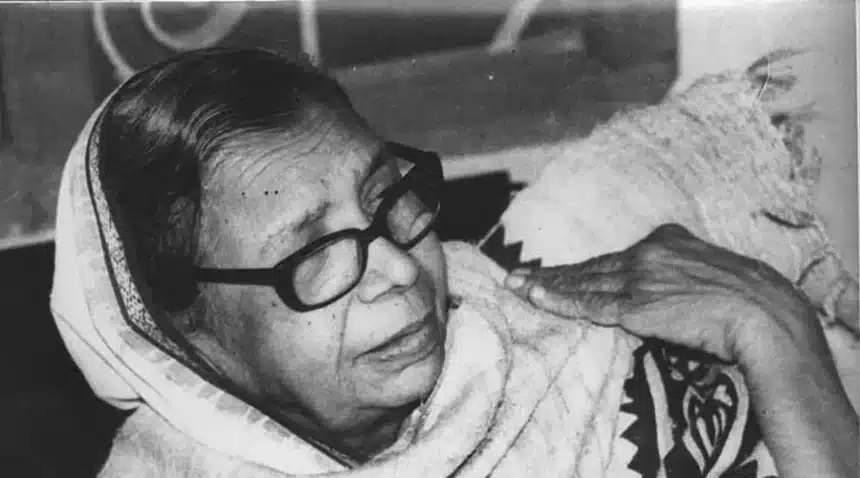Mahadevi Varma (26 March 1907 – 11 September 1987) was an Indian writer, activist, and leading poet of the Chhayavad movement in Hindi literature.
Early Life
Mahadevi Varma was born on 26 March 1907, in, Farrukhabad, UP. Her father Govind Prasad Varma was a professor, and her mom Hem Rani Devi was a passionate, religious women who loved music. Initially, she attended a convent school, but later transferred to Crosthwaite Girls College in Allahabad.
In Crosthwaite, students from all different religions lived together. She started writing poems there secretly. Later, her roommate Subhadra Kumari Chauhan found her poems. They started writing poems together. They usually wrote in the Khariboli dialect. Then they sent their poems to different magazines and got some published. Also, they went to poetry seminars where they met a lot of poets and read out their own poems.
Career
She began teaching in village schools near Allahabad in 1930. Even though she was politically active, she believed in Gandhi’s ideals. She stopped speaking English soon, and mostly wore khadi.
In 1933, she became the first headmistress of the ‘Allahabad Mahila Vidyapeeth.’ She soon became chancellor. She organized poetry conferences “Kavi Sammelans” at the institute while she was there. In 1936, she organized a short-story conference “Galpa Sammelan” that was presided over by Sudakshina Varma.
Throughout her career, she wrote consistently. As an editor and an illustrator, she contributed to the Hindi women’s magazine Chand. In 1942, the works were collected and published as ‘Srinkhala ke Kariyan’.
Contributions
Mahadevi is regarded as one of the four main poets of the Chhayavaad school. Between 1914 and 1938, the Chhayavaad movement emerged from the rise of pathos and romanticism in modern Hindi poetry.
She illustrated some of her poetry, like ‘Yama’ (1940). Yama includes Nihaar (1930), Rashmi (1932), Niraja (1934), and Sandhya Geet (1936). For her poetry, Deepshikha and Yatra, she sketched too.
One of her other famous works, ‘Neelkanth,’ was a story about her peacock experience. This was part of the CBSE syllabus for seventh grade in India.
In ‘Gaura’, she narrated the story of a cow based on her own life. The story of her childhood, “Mere Bachpan Ke Din,” is one of her best works. Her story, “Gillu,” was on the ninth-grade curriculum of the CBSE in India.
Her poem ‘Madhur Madhur Mere Deepak Jal’ was part of the Hindi-B syllabus at CBSE tenth grade.
She tells the story of her friend Bhaktin in her memoir, “Smriti ki Rekhayen”. It’s part of the twelfth-grade Hindi syllabus for CBSE.
In many of her works, even in prose, she supported women’s rights movements of her time.
Awards
In 1956, she was awarded the Padma Bhushan, the third highest civilian award of India. She was the first Indian woman to win the Sahitya Akademi Fellowship in 1979.
Her collection of poems ‘Yama’ won the highest literary award in India, the Jnanpith Award, in 1982.
In 1988 she got the Padma Vibhushan, the second highest civilian award of India.
Death
She died on 11 September 1987, in Allahabad, Uttar Pradesh, India.

